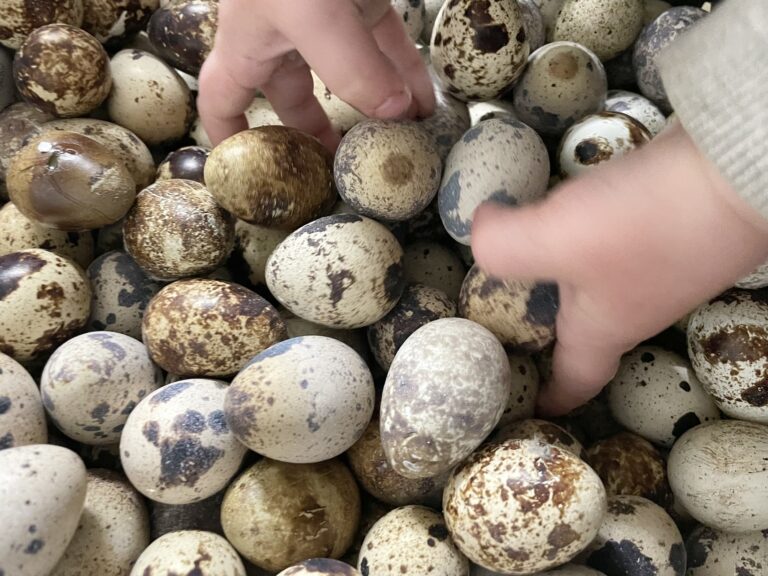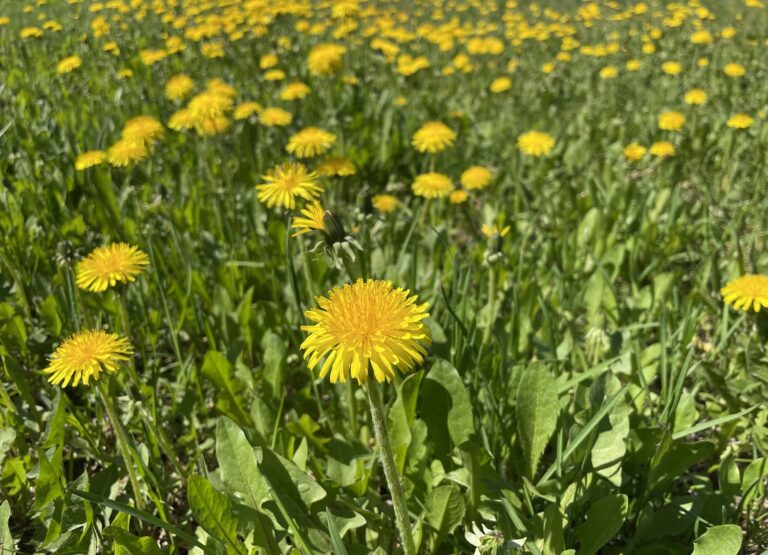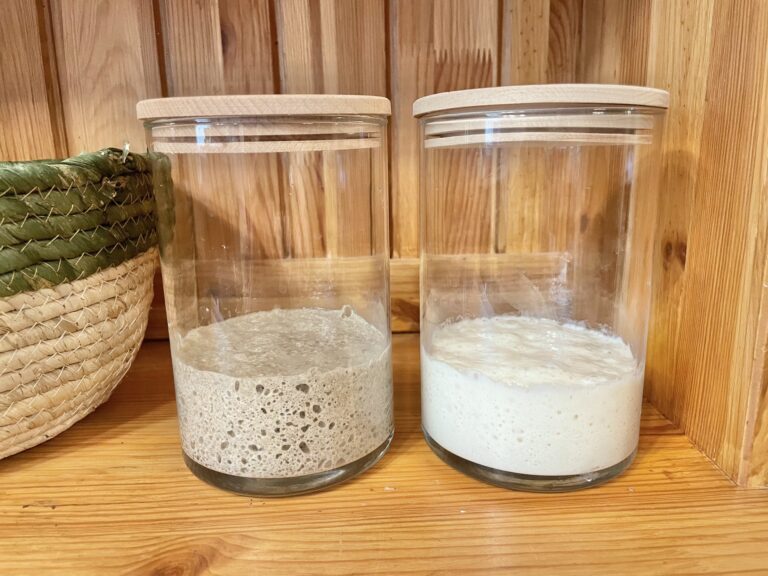Composting has been a known practice since ancient times by the Romans, Greeks, and Egyptians. However, it wasn’t until the 19th century that composting began to be approached scientifically. In the second half of the 20th century, composting gained even more momentum, leading to the development of various technologies aimed at producing high-quality compost quickly.

To compost effectively, it’s important to understand some basic principles. However, it’s also important not to get too bogged down in the details and remember that simple backyard composting should allow for some creativity. In the following sections, I will explain different methods for making compost and provide tips for creating a functional compost pile.
When compost is made correctly, it should not produce any unpleasant odors. The finished compost should have a beautiful brownish color and a soil-like smell, making it an excellent choice for use in garden beds, vegetable garden, greenhouse, and indoor flower pots, wherever the soil is needed.
Before you start reading, come and follow me on Instagram, Facebook, and Pinterest!
What is Compost
In a nutshell, compost is an organic material created through the breakdown process carried out by microorganisms. Compost can be made from anything natural, such as food waste, fall leaves, or weeds. It’s not for nothing that compost is often referred to as “black gold.” It contains many valuable nutrients that plants need and can serve as a natural fertilizer instead of chemical fertilizers. Compost comes in handy, especially in areas with sandy soils or clay soils. It’s also beneficial for use in raised garden beds.
A Compost Pile, a Classic Compost Bin, or a Quick Composter
There are different ways for composting. You can use a commercial composter or a homemade compost bin, a traditional compost pile, or even a quick composter. With advancements in technology, various types of composters are now available, including vermicomposters suitable for regular apartment kitchens or balcony use.
A Quick Composter
A quick composter, as the name implies, is the quickest option for producing compost. Typically, it has insulated walls that resemble a thermos bottle. Thanks to its design, a quick composter can generate very high temperatures, reaching up to 80 °C (176 °F). This helps the compost to mature rapidly, often within just a few months. It’s important to note that the speed of the composting process can vary depending on the composter itself and the materials being composted.
A Compost Bin
If you plan to compost regularly and continuously, a basic composter purchased from a store or homemade compost bin would suffice for home use. These two options work similarly, and the compost is produced at roughly the same rate. For those with some DIY skills, building a composting bin is also an option. By building it yourself, you can decide on the size that you need and even create a visually appealing and unique compost bin. Later on, I will discuss further the characteristics and construction of a good compost bin. With a well-built compost bin, compost can be produced within 1-2 years on average.
A Compost Pile
A traditional compost pile functions similarly to a compost bin. It is most practical to create a compost pile on a large farm where more compost is produced than can be accommodated in a composter. Alternatively, a compost pile can be created in addition to a composter if a surplus amount of compost is produced. However, the downside of using a compost pile is that it can attract birds, rodents, and other wild animals more easily due to its loose structure. In addition, composting in a pile takes longer as the temperature generated by microorganisms doesn’t rise as high in an open pile compared to a closed composter. With proper layering, compost in a pile can take 2-4 years to fully mature.
Types of Composting
There are three primary methods of composting: aerobic, anaerobic, and vermicompost. While I’ll touch briefly on all three, I’ll primarily focus on the most traditional and commonly used method: aerobic composting.
Anaerobic Composting
The anaerobic composting process is distinct from traditional composting methods, as it doesn’t require oxygen or air movement to create compost. Instead, the decomposition occurs through fermentation, resulting in a slow and cold composting process. Unfortunately, this method can also generate unpleasant odors. However, it does require less maintenance compared to aerobic composting.
Aerobic Composting
Aerobic composting is the most well-known and popular method of composting, and it is typically carried out in a regular composter or compost pile. This method requires oxygen, as microorganisms that break down compost feed on oxygen. The compost generated through aerobic decomposition is warm, and under certain conditions, it can even get hot, thanks to the various microorganisms that decompose the compost. Sometimes, earthworms may even climb into the composter and contribute to the process. It is recommended to mix the compost 1-2 times a year with a fork to aerate the compost and allow air to circulate better.
Vermicomposting
Vermicomposting is a composting method where worms are used to break down organic matter instead of fungi and microorganisms. This process requires oxygen, much like aerobic composting, but the worms do the mixing and turning of the compost, eliminating the need for mechanical agitation. Unlike aerobic composting, vermicomposting doesn’t generate heat in the compost pile. Vermicomposters are available for purchase and are ideal for use in indoor settings such as city apartments.
How to Make Compost
In this section, I will discuss the aerobic composting method in more detail as promised. We will focus solely on this method. Despite there being some crucial rules when building a compost pile, the process is straightforward and intuitive, and you don’t need to be overly meticulous when making compost. I will start by explaining the basics simply and clearly, and then delve deeper into the creation of compost and what to pay attention to.
Main Ingredients of Compost
To make (aerobic) compost successfully, four basic ingredients are required: carbon-rich materials (brown materials), nitrogen-rich materials (green materials), oxygen, and water. All four components need to come into contact with each other to provide the best possible living conditions for the microorganisms that break down the compost. These microorganisms feed on the compost and raise the temperature in the compost pile, which can reach up to 80 degrees. This process creates humus, which increases the fertility of the soil.
Greens and Browns of Compost
Brown material refers to anything dry and brown, such as dead leaves, branches, hay, straw, wood chips etc. Brown material contains carbon and is an essential ingredient in composting. On the other hand, green material is composed of fresh organic matter like vegetable scraps, lawn clippings etc. Although it is called “green,” the material doesn’t have to be green in color. The key is that it must be fresh organic matter. Green material contains nitrogen, which is crucial for composting. It is essential to have a balance between the two components. Green material provides moisture to the compost, while brown material prevents excessive clogging and provides oxygen to the microorganisms.
Oxygen, Moisture, and Microorganisms
For microorganisms to thrive, they require sufficient oxygen and moisture. When there is an excess of nitrogen in the compost pile, the oxygen level inside the compost decreases, which is detrimental to the microorganisms. This causes the compost to decay, and the process slows down as the beneficial microorganisms are destroyed. Similarly, the moisture level in the compost must be balanced. Compost with the right amount of moisture appears slightly shiny, and when gently squeezed, only releases water in small amounts. If your compost has too much water, you should add brown materials to balance the moisture. When the compost is too dry, and the temperature inside the compost fails to rise sufficiently, it creates an anaerobic or oxygen-poor environment, causing the compost to rot.
Different Layers
If there is a large amount of compost, it is recommended to stack the compost heap (both inside the composter and on the ground) in layers (this is easier for larger quantities) – alternating between brown materials and green materials. The thickness of one layer of compost could be approximately 20 cm. However, if the compost is continuously generated and not in large quantities, then the brown and green compost contents can also be mixed in the composter. They must have approximately equal amounts. If you put branches in the composter, it would be good to first break them into smaller pieces, as this will help them decompose faster and prevent the compost from becoming too sparse. The brown layer plays a vital role in maintaining the moisture balance. If the compost is too wet, it will start to rot and decomposition will slow down, but if the compost is too dry, the temperature generated by the microbes inside the compost pile will not rise high enough to provide favorable conditions for the composting process. If, for example, there are many dry leaves in the compost pile after raking the garden, it is good to add nitrogen to it with, for example, chicken manure or freshly cut grass. It is also recommended to add soil to the composter or compost pile from time to time, as this helps the decomposition process. It is best to put the soil at the bottom of the composter and, if the composter is full, on top as well. Approximately twice a year, the compost heap could be mixed with a fork or moved to another container to ensure enough aeration for the compost.
How to Layer Compost
- To start with, a layer of soil, approximately 10 cm thick, could be added at the bottom of the compost pile or composter.
- After that, the brown and green layers can be added, with a thickness of approximately 20cm for each layer. Depending on the amount and type of compost being created, the layers can also be mixed, but it is essential to ensure that they are balanced.
- Once the compost pile or composter is full, and there is no more compost to add, it is recommended to cover the top of the pile with a layer of soil, approximately 10 cm thick, as well as the bottom of the composter. This helps to retain moisture and nutrients in the pile. Adding a layer of hay or straw on top can also help to insulate and retain warmth.
Weeds in the Compost Pile
Throwing weeds and diseased plant branches into the compost heap always comes with a small risk. Disease-causing parasites are only destroyed when the compost pile temperature has risen to 55-60°C (135-140°F) and remains so for several days. A well-made compost pile in a properly constructed composter will easily reach this temperature. However, it is recommended to place weeds in the center of the pile because the temperature rises higher in the center than at the edges. As mentioned previously, it is essential to maintain adequate moisture in the compost pile for the temperature to rise. During hot summers when there is a drought, and no rain, it may be necessary to water the compost pile, ensuring that it doesn’t get too wet.
Composting in Winter
If you are using an insulated rapid composter for composting, then the walls of the composter will prevent the compost from freezing, allowing the composting process to continue even in cooler weather. However, if you are using a regular composter without insulation, or even more so in an open compost pile, the compost may freeze in winter, causing the composting process to temporarily stop. When the weather warms up, the compost thaws and the process resumes. In areas with heavy snowfall, the outside of the composter can be covered with a layer of snow to provide additional insulation and prevent the compost from freezing.
What to Compost and What Not to Compost
Ingredients That Must Not be Added
It is important to note that only biodegradable materials like kitchen scraps, grass clippings, and other organic waste can be put in the compost bin. Items such as rubber, plastic, film, and synthetic construction waste should not be placed in the compost bin.
Ingredients That are Risky to Add
Here are some examples of compostable materials that may contain parasites, and pesticides, or require a high temperature of 55-60°C (135-140°F) for complete decomposition. This is the normal compost temperature, but if the compost bin is not compliant or the compost is not properly prepared, there won’t be enough heat and you won’t get mature compost.
- Weeds and infected plants should be placed in the center of the compost pile to ensure exposure to higher temperatures for complete decomposition.
- Pet and human waste should not be composted due to the risk of containing pathogens that may not be destroyed, which could be hazardous to health if used for growing food. However, it can be used safely in a flower bed.
- Food scraps treated with pesticides, such as banana peels and citrus fruits, decompose slowly and can be composted but should also be placed in the middle of the pile to speed up decomposition and destroy pesticides at a higher temperature.
- Rotten apples may carry diseases, and it’s important to ensure that they are exposed to as much heat as possible for safe composting.
- Meat, bones, and other animal remains do not decompose quickly in compost and can attract rodents and other animals.
- Pine needles are covered in resin and may not decompose well, and adding large quantities can slow down the composting process.
Ingredients That are Good to Add
- A good compost should contain equal amounts of nitrogen (green fresh material) and carbon (brown dry material).
- In addition to the materials mentioned earlier, lime, ash, hair, cardboard boxes, newspapers, coffee grounds, tea bags, eggshells, coffee filters and toilet paper contents can also be composted as they all contain carbon.
- Furthermore, chicken manure can also be added to the compost as it is a good source of nitrogen.
How to Build a Compost Bin
Finally, let’s discuss the crucial topic of constructing a composter. I won’t provide a step-by-step guide on how to build one, as I believe anyone with a cordless drill can easily construct it themselves. However, I’ll explain what you need to consider to ensure that the composter works efficiently and effectively.
Location
- The compost pile and the composter should be placed on the ground, rather than in a dug hole or depression. Otherwise, the compost may become too wet due to constant flooding. It is also easier to access the compost when it is above ground.
- It is recommended to choose a location for the compost that is sheltered from the wind and sun. For instance, underneath a tree would be a good spot.
Construction
- To ensure optimal composting, it is recommended that the height of the composter be 1.5m (5 feet) and not higher. The ideal dimensions of the composter area are 1-1.5m x 1-1.5m (2-5 feet); it can be larger, but not smaller as this may impede the composting process.
- The compost pile must be sufficiently large for the decomposition process to function effectively.
- While the three walls of the composter (the back and sides) can be made of strong, non-detachable materials such as decorative stones, it is best to construct the front wall from wood to allow for easier access to the compost.
- It is recommended to have a bottom poured into the compost box or stacked with stones, as this prevents rainwater from washing away useful substances into the soil beneath the composter. If a bottom is not included, the composter must be built with an incline and a small crack in the lower part of the wall to allow excess liquid to drain away.
- There must be no large air cracks, air holes, or gaps in the walls of the compost bin as this will prevent the temperature from rising sufficiently during composting. Aeration can be facilitated by the mixing of the brown and green layers, and there is no need to worry about additional aeration.
- While the compost bin can function without a lid, it is still recommended to add one to protect the compost from excessive rain and prevent it from drying out too much.
- It is most convenient to have three separate composters adjacent to one another or a composter with three chambers: one for ready compost, one for compost in preparation, and one for compost currently being piled.
- To prevent rodents and slow down the wood’s rotting process, a fine-mesh net can be placed against the wooden part of the compost box.
- It is not advisable to leave gaps in the side boards of the composter as this can inhibit the necessary high-temperature buildup during composting. Aeration should be facilitated by mixing the brown and green layers.
Here, you can see a great DIY compost bin project.
Ideas and Tips
- To check if the compost is ready, place a small amount of compost soil in a container and add a few seeds that germinate quickly. If the sprouted plants are green and have white roots, the compost is ready. However, if the plants are yellowish and brown, the compost still needs more time.
- If ants are present in the compost bin, it is a sign that the compost is too dry.
- If flies appear in the compost bin, it’s a good idea to push the eggs and flies more profound into the compost because it’s hotter there. Flies are destroyed at temperatures of 43°C (110°F).
- When flies appear, add carbon-rich compost material to the pile because they are attracted to nitrogen-rich (green) material.
- You can leave a layer of the previous compost soil at the bottom of the compost pile instead of adding new soil.
- You don’t always have to wait for the compost to be completely ready before using it; it can be used earlier.
- Larger pieces of food can be cut into smaller pieces to create a larger surface area for microorganisms to work on. However, reports that are cut too small can prevent the free flow of air in the compost.





